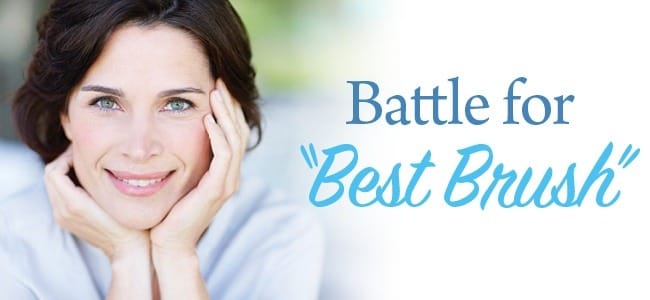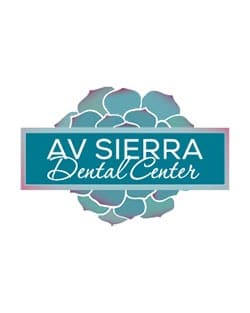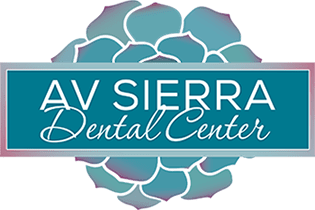Manual vs. Electric: The Battle for Best Brush

Once every three or four months, you inevitably find yourself standing in the oral hygiene aisle at the grocery store scanning rows and rows of an endless variety of toothbrushes. They come in all shapes, sizes, and colors — and some of them even come with small motors. But how do you know which one is the best for you or your children? The Basics There are some basics you should look for when purchasing a new brush: The handle of the toothbrush should be a length and shape that best allows you to hold and maneuver it as you brush. The head of the toothbrush should be able to easily access all of the surfaces of your teeth. A half inch wide and one inch tall works best for most adults. Toothbrushes come with bristles that are categorized as hard, medium, and soft. Soft is preferable for most people; medium- and hard-bristled brushes can cause damage to tooth enamel. Choose a brush with American Dental Association-approved nylon bristles. Manual or Electric Electric toothbrushes have become increasingly popular over the last several years. They come in all shapes and sizes, and they are suited for both children and adults. But are they more effective than manually brushing your teeth with a traditional brush? The American Dental Association (ADA) has addressed this topic in multiple news releases, saying that manual brushes can indeed be as effective as electric. People using manual brushes who have excellent oral hygiene practices can prevent tooth decay as well as those who use electric. Electric toothbrushes can be very helpful for people who have difficulty adequately brushing. Individuals who suffer from a disability or arthritis, as well as children just learning to brush, stand to benefit from using a suitable electric brush. Manual vs. Electric Both manual and electric toothbrushes have their benefits and their drawbacks. This is how they stack up next to each other. Benefits of the Manual Toothbrush Teeth can be adequately cleaned after only two minutes of brushing. Toothbrushes come in a large variety of sizes, shapes, and colors, so you can find the one that works perfectly for you and each of your family members, including your children. Some children’s brushes come with their favorite characters on them, making them extra appealing and fun to brush with. Low maintenance and travel friendly, manual toothbrushes don’t require batteries or electricity for recharging, and you can just pop them in your travel pack or purse when you are on the go. Manual toothbrushes are low cost or free (with some dental visits). Benefits of the Electric Toothbrush There’s little work with a lot of payoff. With very little effort, these toothbrushes thoroughly clean your teeth. Many electric toothbrushes come with a timer so you don’t even have to pay attention to the clock — perfect for those groggy mornings. These brushes are child friendly and tend to alleviate the battle parents typically face when trying to get their children to brush their teeth. Oftentimes children even look forward to the task. These brushes also come with fun characters printed on them. Disadvantages of the Manual Toothbrush Using a manual toothbrush requires more effort and attention than when using an electric toothbrush. Disadvantages of the Electric Toothbrush These brushes are more expensive than the manual alternative. Electric brushes are higher maintenance as they require batteries and the ability to recharge, which also makes them more challenging to travel with. There are some basics that should be covered by any good brush. Whether you should choose to purchase a manual toothbrush or an electric toothbrush for your oral hygiene routine largely depends on your personal and lifestyle choices. While choosing the right toothbrush for yourself and your children is important, dedication your daily at-home oral hygiene routine and making it to your routine dental visits is crucial to maintaining your oral health. If you would like to learn more about products and oral hygiene habits that will help you maintain your best oral health, call us today at 661.202.3542 to set up an appointment.
Understanding the Dental-Health/Whole-Health Connection

When you think about visiting the dentist, you most likely think about keeping your teeth white and straight, and having an attractive smile. What you may not realize is that maintaining good oral health has value beyond the obvious aesthetic rewards of a beautiful smile. Dedication to maintaining good at-home oral hygiene practices and making regular visits to the dentist protect your overall health and can help you avoid serious health complications and disease. Healthy Mouth, Healthy Body Recent research has linked gum disease to health problems that affect women and men of all ages. Gum disease is a bacterial infection, and as a result, it can enter the bloodstream and cause other health issues: Heart disease: Gum disease increases the risk of heart disease and doubles the risk of having a fatal heart attack. Heart disease is the number-one killer of women in America. Stroke: Studies have linked gum disease to strokes, with a large percentage of those who have experienced a stroke shown to have been simultaneously suffering from periodontal infections. Pregnancy outcomes: Gum disease during pregnancy can increase chances of a premature birth. Warning Signs While regular visits to the dentist can help you maintain good health and prevent certain diseases, your oral health can tell your dentist a lot about your overall health as well, and it can raise red flags for health conditions that you may be unaware of. These conditions include: Oral cancer: Every time you go in to the dentist for a routine checkup, they screen for oral, head, and neck cancers. When it’s caught early, you have a good chance for a full recovery. Diabetes: Gum disease can be a sign of diabetes. People with diabetes often suffer from gum disease, as it reduces the body’s resistance to infection, leaving the gums susceptible to disease. Osteoporosis: Periodontal bone loss and tooth loss can be a sign of osteoporosis, which causes bone to become weak and brittle. Early diagnosis of osteoporosis can lead to treatments that can help stave off bone loss and keep them, as well as your teeth, strong and healthy. Alzheimer’s disease: Studies suggest that when tooth loss occurs before the age of 35, it can be an early sign of Alzheimer’s disease. Knowledge Is Power So how does knowing the connection between whole health and your dental health help you? Now that you know there is such a strong connection, you understand the importance of having a provider who understands it and uses this knowledge to help you make general health care decisions. It also helps you fully understand the importance of maintaining excellent at-home dental hygiene practices and the best oral hygiene basics: Brushing twice daily Flossing every day Attending two routine dental exams annually, with cleanings Regularly using a toothpaste with fluoride and a rinse Following a healthy diet that is designed to improve both oral and whole health To find out what your oral health says about your overall health, schedule an appointment with our provider today. Sources: https://www.adha.org/resources-docs/7228_Oral_Health_Total.pdf https://www.mayoclinic.org/healthy-lifestyle/adult-health/in-depth/dental/art-20047475
